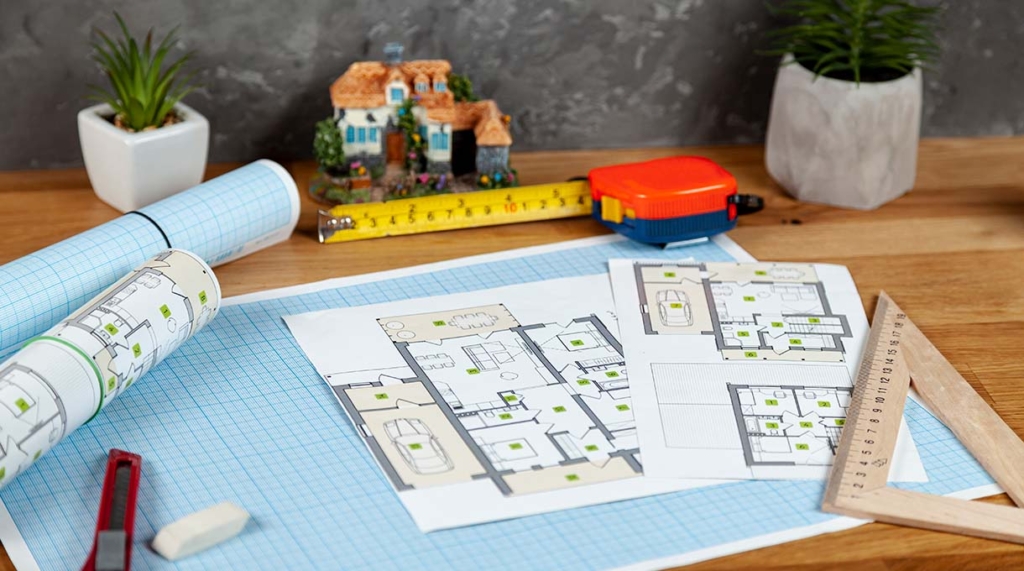Introduction
Buying a home is a life-changing decision, and ensuring it aligns with Vastu Shastra can pave the way for happiness, prosperity, and peace. Vastu principles create a harmonious balance between your home and natural energies. Here are the critical Vastu checks to keep in mind before purchasing a home

1. Entrance Direction
The main entrance is the gateway for energy.
- Ideal Directions: North, East, or Northeast. These directions invite positive energy and prosperity.
- Avoid: South, Southwest, or West entrances, as they may bring in challenges or negativity.
2. Shape of the Plot and House
The shape of the plot and the home layout determine energy flow.
- Ideal Shape: Square or rectangular.
- Avoid: Irregular, L-shaped, or triangular plots.
3. Location of the Living Room
The living room is the central gathering space, so its location is vital.
- Ideal Direction: North, East, or Northeast.
- Avoid: Living rooms in the South or Southwest corners.
4. Position of the Kitchen
The kitchen represents fire energy, crucial for health and prosperity.
- Ideal Direction: Southeast is the best; Northwest is an acceptable alternative.
- Avoid: Northeast, as it can disturb peace and health.
5. Master Bedroom Placement
The master bedroom’s placement impacts stability and relationships.
- Ideal Direction: Southwest for the head of the family.
- Avoid: Northeast or Southeast for bedrooms, as they may cause restlessness or conflicts.
6. Location of Bathrooms and Toilets
Improper placement of bathrooms can disrupt the energy balance.
- Ideal Direction: Northwest or Southeast.
- Avoid: Northeast, center, or Southwest corners of the home.
7. Brahmasthan (Center of the Home)
The center of the house, or Brahmasthan, is a sacred space.
- Keep It Open: Avoid heavy furniture or clutter in this area.
- Avoid: Toilets, staircases, or kitchens in this zone.
8. Staircase Placement (For Multi-Floor Homes)
The staircase placement affects energy circulation.
- Ideal Direction: South, Southwest, or West.
- Avoid: Staircases in the Northeast, as they block positive energy.
9. Ventilation and Natural Light
Proper ventilation and sunlight ensure the flow of positive energy.
- Check: Windows and doors should open in the North or East directions for fresh energy.
- Avoid: Dark, closed-off spaces.
10. Water Sources
Water elements, such as wells, water tanks, or aquariums, influence prosperity.
- Ideal Placement: Northeast.
- Avoid: Water sources in the South or Southwest.
11. Balconies and Open Spaces
Balconies bring natural light and air into the home.
- Ideal Direction: North or East-facing balconies.
- Avoid: Balconies in the South or West.
12. Slopes and Levels
The slope and elevation of the house impact energy balance.
- Ideal: Land sloping towards the North or East is auspicious.
- Avoid: Land sloping towards the South or West.
13. Overhead Beams
Exposed overhead beams can create mental and physical stress.
- Avoid: Sleeping or sitting directly under beams.
14. Surroundings and Environment
The neighborhood and surroundings also play a role in Vastu.
- Prefer: Homes surrounded by greenery and positive spaces.
- Avoid: Homes near graveyards, hospitals, or busy crossroads.
15. Placement of Pooja Room
The pooja room is a space for spirituality and devotion.
- Ideal Location: Northeast corner is the most auspicious.
- Avoid: Pooja rooms in bedrooms, bathrooms, or kitchens.
16. Room Placement Checklist
- Children’s Bedroom: West or Northwest.
- Guest Room: Northwest.
- Dining Room: West or East.
17. Avoid Flats with Extensions or Cut-Off Corners
Extensions or cut-off corners can create energy imbalances.
- Favor: Northeast extensions for positivity.
- Avoid: Missing corners in the North or East.
Conclusion
A Vastu-compliant home is not just about following ancient traditions; it’s about creating a space that feels balanced, peaceful, and welcoming. By ensuring these Vastu checks, you can make your new home a sanctuary of positivity and prosperity. When in doubt, consult a Vastu expert to implement the right remedies.

